Topics
Category
Era
Minnesota Motor Corps
Motor Corps vehicles at Camp Lakeview, Lake City, Minnesota, September, 1918. An estimated $300,000 worth of automobiles were present. Photograph from Minnesota Historical Society Sound and Visual Collection II.4
The Minnesota Motor Corps was the first militarized organization of its kind in the United States. Made up of volunteers and their vehicles, the corps existed for the duration of World War I. It provided disaster relief, transported troops, and aided police. The Motor Corps’ services proved crucial, but many viewed it as a state-sponsored police force that infringed on the rights of citizens.
In 1917, the Minnesota Motor Reserve was formed under the sponsorship of the Minnesota Commission of Public Safety (MCPS). It was founded by Roy B. Simning, secretary of the Minneapolis Automobile Trade Association. The Motor Reserve was meant to secure cars in each county under the direction of sheriffs and to provide transportation for state troops and posses. Though it had some success in Minneapolis, the reserve eventually became stagnant.
Winfield Stephens, of Pence Automobile in Minneapolis, proposed reorganizing and militarizing the organization. Adjutant General Rhinow and Governor J. A. A. Burnquist approved. The Motor Corps was authorized in May of 1918 under the authority of the adjutant general; Stephens became its commander.
The corps was not recognized by any government act. Even so, control shifted from local sheriffs to the state military. Rhinow considered the Motor Corps part of the Minnesota Home Guard. Though the two organizations often blended, the Home Guard was created by law while the Motor Corps was not.
The Motor Corps was organized into a brigade of ten battalions, numbering 2,583 officers and men from around the state. The corps’ headquarters was at Colonel Stephens’ car dealership in Minneapolis. The motor battalions were supplemented by three additional units. A Medical Corps was commanded by Major Thomas Warham and an Aero Division was commanded by Captain John P. Ernster. The Red Cross formed an official auxiliary of the Motor Corps.
Volunteers equipped themselves and their vehicles at their own expense, and an enlistee promised to furnish a five-passenger motor car for transporting state troops. Most members were businessmen and professionals. The Motor Corps did not recruit people of color or women.
Units of the Motor Corps drilled in fields and met in local halls, car dealerships, and armories. The largest gathering was an encampment held at Camp Lakeview outside Lake City in September of 1918. Nearly one thousand men with six hundred vehicles attended. Adjutant General Rhinow inspected the troops. An ambulance corps of the Minnesota National Guard attended. Drill at the encampment was done in infantry and motor formations, and men were specifically trained to quell riots and break strikes.
The Motor Corps proved its value during two natural disasters that occurred in 1918. On August 21, a tornado passed through the town of Tyler. Units of the Motor Corps from the Twin Cities transported troops and medical supplies to the town over treacherous roads the day after.
The most important duty the Motor Corps performed was aiding citizens after the fires of October 1918. Units of the Motor Corps from the Twin Cities, Duluth, the Iron Range, and other communities drove to the burned-over district. Without food or rest they were sent into the charred areas to care for the injured and recover the dead. The Motor Corps provided the only transportation in the disaster zone and was pivotal in transporting victims, state troops, and supplies.
The Motor Corps participated in slacker raids, tracking down criminals and closing saloons. It was also used to break strikes and subdue political agitation. These actions made many perceive it as a tool of the state and an enemy of the Nonpartisan League, organized labor, and political freedom.
The Motor Corps became a model for other states and Burnquist hoped it would become a federal organization. When World War I ended, a bill to make the Motor Corps a permanent part of the state military was introduced in the Minnesota legislature. Burnquist, the MCPS, and Rhinow had the bill introduced by their followers. They felt the Motor Corps was needed to combat “red socialism” and disturbances. The bill was controversial and faced opposition from organized labor, political activists, and the National Guard. The bill passed the House but was defeated in the Senate. With the war over, and no legal basis for its existence, the Motor Corps disbanded.
Bibliography
American National Red Cross, Serving the Nation for 75 Years, 1881–1956: Minneapolis and Hennepin County Chapter: 1915–1956, Serving this Area for 41 Years. [Minneapolis: The Chapter, 1956].
“Bill Muffling. Motor Corps is Passed in House.” Minneapolis Tribune, February 14, 1919.
Buell, C.J. The Minnesota Legislature of 1919. [St. Paul?: C.J. Buell, 1919?].
http://www.leg.state.mn.us/docs/NonMNpub/oclc00500242.pdf
Cary, Leonard. How Minnesota Gave to the United States the First Military Motor Corps. Minneapolis: Bancroft Printing, 1918.
Chrislock, Carl H. Watchdog of Loyalty: The Minnesota Commission of Public Safety During World War I. St. Paul: Minnesota Historical Society Press, 1991.
“Foes of Motor Corps Storm State Capitol.” Minneapolis Tribune, February 2, 1919.
Inaugural Message of Governor J.A.A. Burnquist to the Legislature of Minnesota, 1919.
http://www.leg.state.mn.us/docs/NonMNpub/oclc18196670.pdf
Luukkonen, Arnold L. “Brave Men in Their Motor Machines—And the 1918 Forest Fire.” Ramsey County History 9, no. 2 (Fall 1972): 3–8.
Collection II.4
Minnesota Motor Corps
Audiovisual Collection, Minnesota Historical Society, St. Paul
Description: Photograph collection of the Minnesota Motor Corps. The collection includes images of officers, drill, automobile dealerships, the fires of 1918, and activities during the encampment at Camp Lakeview.
Motor Corps Records, 1917–1919
Minnesota National Guard
State Archives Collection, Minnesota Historical Society, St. Paul
http://www2.mnhs.org/library/findaids/gr00864.xml
Description: Enlistment papers, oaths of office, and encampment reports.
Rhinow, W. F. Report of the Adjutant General of the State of Minnesota covering the Thirteenth Biennial Period Ending December 31, 1918. Vol. 1. Minneapolis, MN: Syndicate Printing Co., 1918.
http://books.google.com/books?id=Gj4WAAAAYAAJ&pg=PA340&lpg=PA340&dq=adjutant+general+report+minnesota+1917&source=bl&ots=kAV2FAUdZN&sig=PU11b3ruDqwx98vWiZARSUQ-8js&hl=en&sa=X&ei=JMkuVIK4GY-hyATivoKgAg&ved=0CCEQ6AEwAQ#v=onepage&q&f=false
“Uniformed Reserve of Motorists Made Part of State Force.” Minneapolis Tribune, May 5, 1918.
Related Resources
Primary
“Death Dealing Holocaust has Start Near Bemidji. Motor Corps on Ground.” Minneapolis Tribune, October 14, 1918.
Main Files, 1917–1919
Minnesota Commission of Public Safety
State Archives Collection, Minnesota Historical Society, St. Paul
http://www2.mnhs.org/library/findaids/gr00954.xml?return=brand%3Dfindaids%26q%3DMinnesota%2520Commission%2520of%2520Public%2520Safety
Description: Files of the commission that created the Minnesota Motor Reserve.
“Motor Corps Here this Week.” Lake City Graphic-Republican, September 20, 1918.
“Motor Corps in Camp Here.” Lake City Graphic-Republican, September 27, 1918.
Records of Governor J. A. A. Burnquist, 1915–1927 (bulk 1915–1921)
Minnesota, Governor
State Archives Collection, Minnesota Historical Society, St. Paul
http://www2.mnhs.org/library/findaids/gov033.xml
Description: Records of Governor Burnquist which provide context on World War One issues surrounding the creation, direction, and disbandment of the Motor Corps.
“Relief Rushed to Tornado Stricken Tyler; 29 Bodies Recovered.” Minneapolis Tribune, August 23, 1918.
“Rhinow Goes to Tyler; Marshal Law Expected.” Minneapolis Journal, August 22, 1918.
Secondary
Millikan, William. “Maintaining ‘Law and Order’: the Minneapolis Citizen’s Alliance in the 1920s.” Minnesota History 51, no. 6 (Summer 1989): 219–233.
http://collections.mnhs.org/MNHistoryMagazine/articles/51/v51i06p219-233.pdf
Related Images
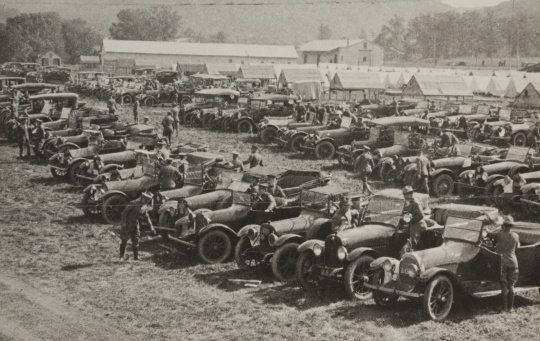
Motor Corps vehicles
Motor Corps vehicles at Camp Lakeview, Lake City, Minnesota, September, 1918. An estimated $300,000 worth of automobiles were present. Photograph from Minnesota Historical Society Sound and Visual Collection II.4
Public domain
Holding Location
Articles

Minnesota Motor Corps encampment
Minnesota Motor Corps encampment, Camp Lakeview, Lake City, c.1918.
Public domain
Holding Location
Articles
More Information
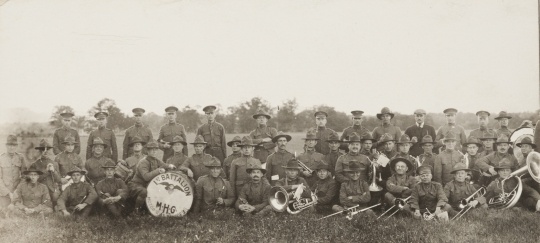
First Battalion, Minnesota Motor Corps Band
First Battalion, Minnesota Motor Corps Band at Camp Lakeview, Lake City, Minnesota, September, 1918. Photograph from Minnesota Historical Society Sound and Visual Collection II.4.
Public domain
Holding Location
Articles
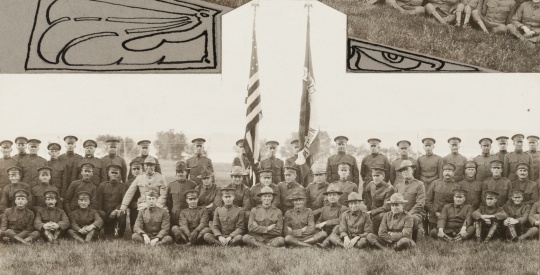
Minnesota Motor Corps officers and color guard
Minnesota Motor Corps officers and color guard at Camp Lakeview, Lake City, Minnesota, September, 1918. Motor Corps commander, Colonel Stephens, is kneeling left of the colors in the light colored tunic. Photograph from Minnesota Historical Society Sound and Visual Collection II.4.
Public domain
Holding Location
Articles
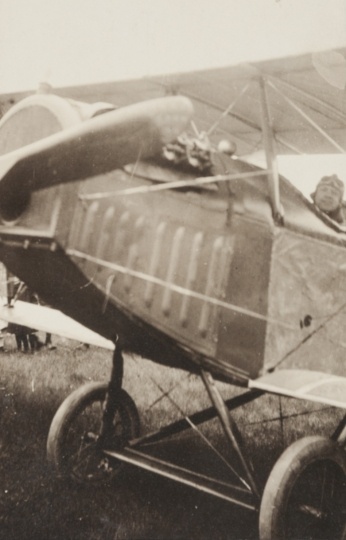
Motor Corps airplane about to take off
Motor Corps airplane about to take off at Camp Lakeview, Lake City, Minnesota, September, 1918. Photograph from Minnesota Historical Society Sound and Visual Collection II.4.
Public domain
Holding Location
Articles
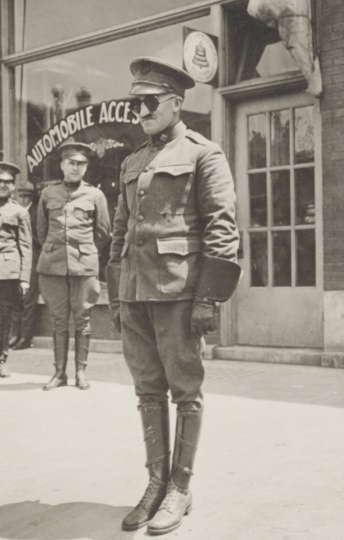
Motor Corps officer, Chet Walker
Motor Corps officer, Chet Walker, nicknamed "the Army," during a recruiting tour in Red Wing, Minnesota, 1918.
Public domain
Holding Location
Articles
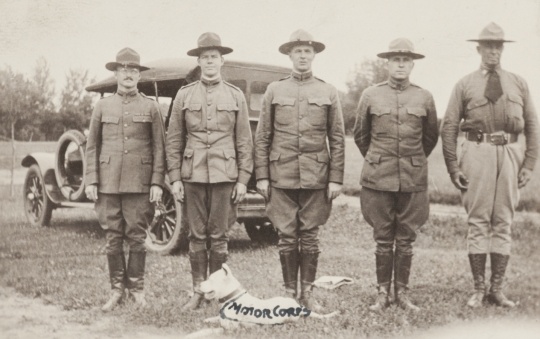
Reviewing officers at Motor Corps encampment, Fairmont
Reviewing officers at Motor Corps encampment, Fairmont, c.1918. (L to R) W.A. Curtis, Edward Karow, unidentified, unidentified, Motor Corps commander, Colonel Winfield Stephens. Photograph from Minnesota Historical Society Sound and Visual Collection II.4.
Public domain
Holding Location
Articles
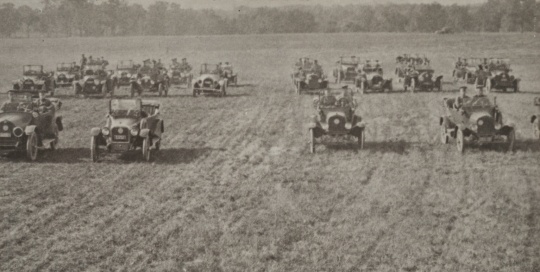
Column of fours
Column of fours formation at Camp Lakeview, Lake City, Minnesota, September, 1918. Photograph from Minnesota Historical Society Sound and Visual Collection II.4.
Public domain
Holding Location
Articles
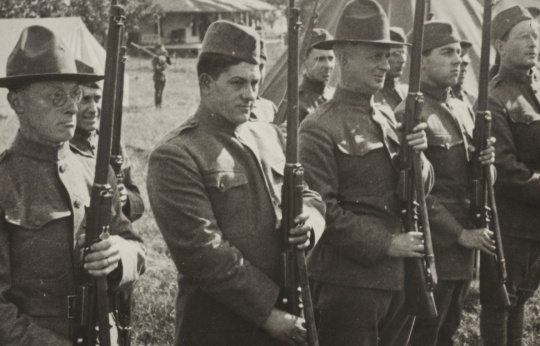
Motor Corpsmen presenting arms
Motor Corpsmen presenting arms at Camp Lakeview, Lake City, Minnesota, September, 1918. Photograph from Minnesota Historical Society Sound and Visual Collection II.4.
Public domain
Holding Location
Articles
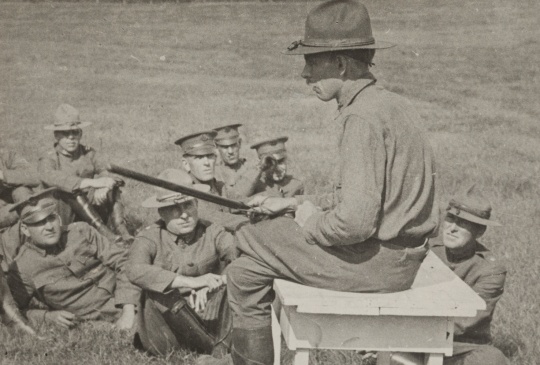
Riot stick instruction
Colonel Bellows of the Minnesota National Guard giving instruction in riot stick usage. Camp Lakeview, Lake City, Minnesota, September, 1918. Photograph from Minnesota Historical Society Sound and Visual Collection II.4.
Public domain
Holding Location
Articles
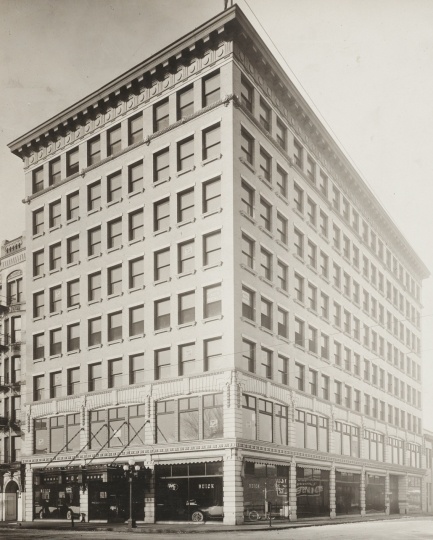
Motor Corps headquarters
Motor Corps headquarters at Colonel Winfield Stephens' Buick dealership in Minneapolis, c.1918. Photograph from Minnesota Historical Society Sound and Visual Collection II.4.
Public domain
Holding Location
Articles
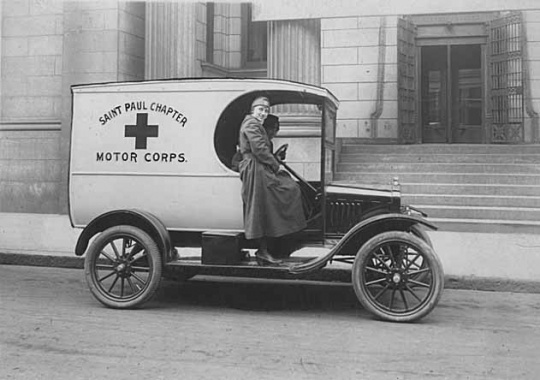
Red Cross Motor Corps truck
Red Cross Motor Corps truck, St. Paul, 1918.
Public domain
Holding Location
Articles
More Information
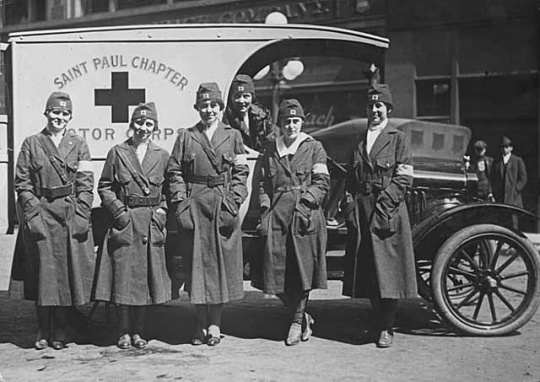
Members of St. Paul Chapter of Red Cross, Motor Corps
Members of the St. Paul Chapter of the Red Cross, Motor Corps, 1918.
Public domain
Holding Location
Articles
More Information
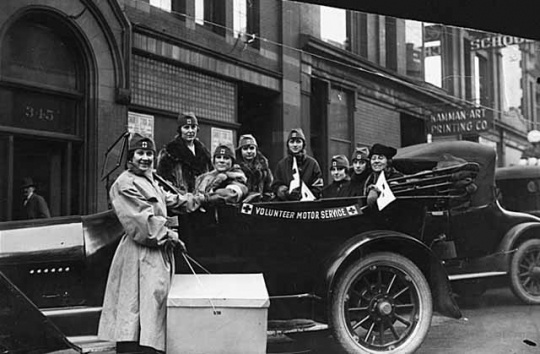
Red Cross Volunteer Motor Service
Members of the Red Cross Volunteer Motor Service, 1918.
Public domain
Holding Location
Articles
More Information
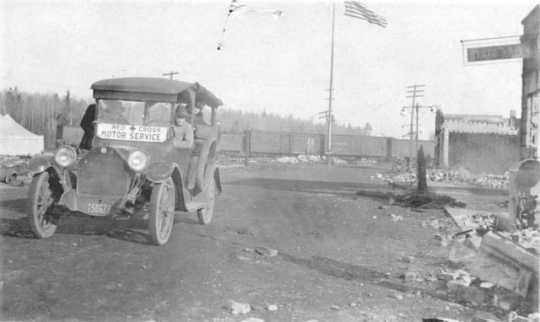
Red Cross Motor at Moose Lake
Red Cross Motor Service car providing relief efforts after the October fires of 1918.
Public domain
Holding Location
Articles
More Information
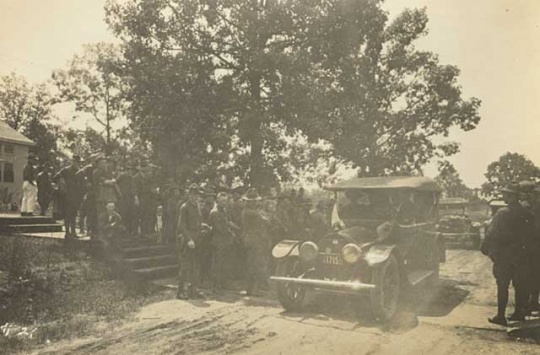
Red Cross Motor Auxiliary providing transportation
Red Cross Auxiliary providing transportation to soldiers, c.1918.
Public domain
Holding Location
Articles
More Information
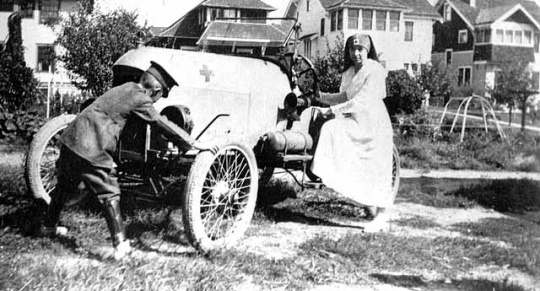
Red Cross nurse and officer
A Red Cross nurse, and likely Motor Corps officer, 1918. The car has the Red Cross symbol on the hood and was likely part of the Minnesota Motor Corps.
Public domain
Holding Location
Articles
More Information
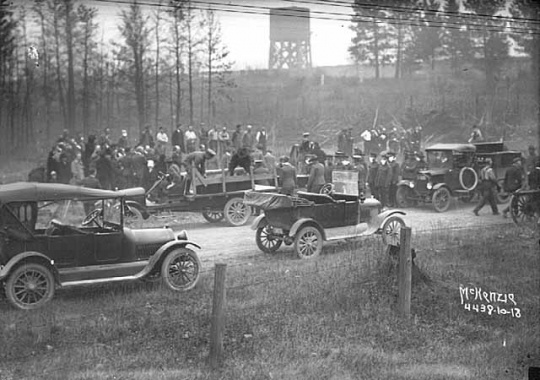
Motor Corps vehicles in use after fires of 1918
Relief workers unloading coffins from Motor Corps vehicles after the fires of 1918.
Public domain
Holding Location
Articles
More Information
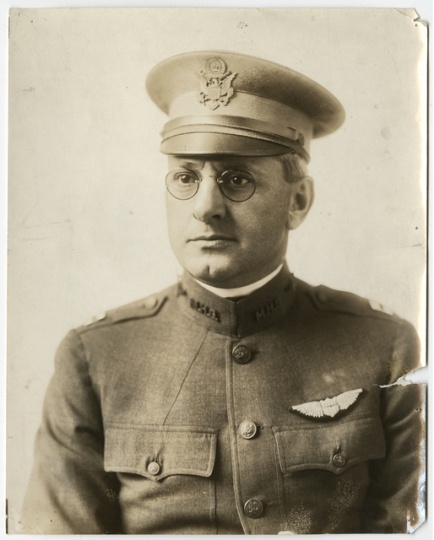
Captain John P. Ernster
Captain John P. Ernster, c.1918. Ernster commanded the Aero Division of the Minnesota Motor Corps.
Public domain
Holding Location
Articles
More Information
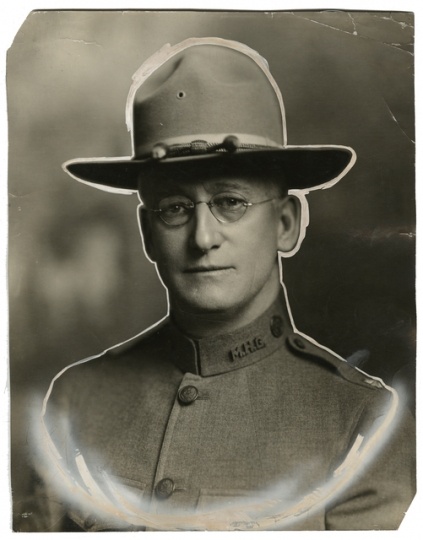
Major Thomas Warham
Major Thomas Warham, c.1918. Warham was commander of the Medical Corps, Motor Corps Division.
Public domain
Holding Location
Articles
More Information
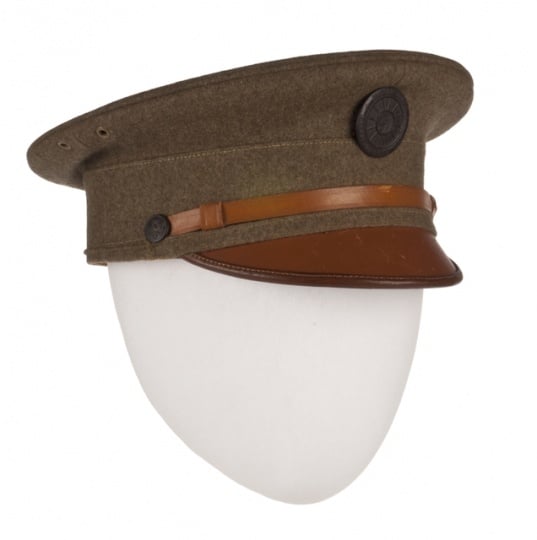
Minnesota Home Guard, Motor Corps Cap
Minnesota Home Guard, Motor Corps Cap, showing Motor Corps insignia.
All rights reserved
Holding Location
More Information
Related Articles
Turning Point
In May 1918, the Minnesota Motor Reserve is renamed the Minnesota Motor Corps. The new organization is militarized and put under the authority of the state military.
Chronology
1917
December 2, 1917
May 23, 1918
August, 1918
August 21, 1918
August 26, 1918
Septem-ber 21–23, 1918
October 1918
1919
January 14, 1919
February 4, 1919
February 13, 1919
February 18, 1919
Bibliography
American National Red Cross, Serving the Nation for 75 Years, 1881–1956: Minneapolis and Hennepin County Chapter: 1915–1956, Serving this Area for 41 Years. [Minneapolis: The Chapter, 1956].
“Bill Muffling. Motor Corps is Passed in House.” Minneapolis Tribune, February 14, 1919.
Buell, C.J. The Minnesota Legislature of 1919. [St. Paul?: C.J. Buell, 1919?].
http://www.leg.state.mn.us/docs/NonMNpub/oclc00500242.pdf
Cary, Leonard. How Minnesota Gave to the United States the First Military Motor Corps. Minneapolis: Bancroft Printing, 1918.
Chrislock, Carl H. Watchdog of Loyalty: The Minnesota Commission of Public Safety During World War I. St. Paul: Minnesota Historical Society Press, 1991.
“Foes of Motor Corps Storm State Capitol.” Minneapolis Tribune, February 2, 1919.
Inaugural Message of Governor J.A.A. Burnquist to the Legislature of Minnesota, 1919.
http://www.leg.state.mn.us/docs/NonMNpub/oclc18196670.pdf
Luukkonen, Arnold L. “Brave Men in Their Motor Machines—And the 1918 Forest Fire.” Ramsey County History 9, no. 2 (Fall 1972): 3–8.
Collection II.4
Minnesota Motor Corps
Audiovisual Collection, Minnesota Historical Society, St. Paul
Description: Photograph collection of the Minnesota Motor Corps. The collection includes images of officers, drill, automobile dealerships, the fires of 1918, and activities during the encampment at Camp Lakeview.
Motor Corps Records, 1917–1919
Minnesota National Guard
State Archives Collection, Minnesota Historical Society, St. Paul
http://www2.mnhs.org/library/findaids/gr00864.xml
Description: Enlistment papers, oaths of office, and encampment reports.
Rhinow, W. F. Report of the Adjutant General of the State of Minnesota covering the Thirteenth Biennial Period Ending December 31, 1918. Vol. 1. Minneapolis, MN: Syndicate Printing Co., 1918.
http://books.google.com/books?id=Gj4WAAAAYAAJ&pg=PA340&lpg=PA340&dq=adjutant+general+report+minnesota+1917&source=bl&ots=kAV2FAUdZN&sig=PU11b3ruDqwx98vWiZARSUQ-8js&hl=en&sa=X&ei=JMkuVIK4GY-hyATivoKgAg&ved=0CCEQ6AEwAQ#v=onepage&q&f=false
“Uniformed Reserve of Motorists Made Part of State Force.” Minneapolis Tribune, May 5, 1918.
Related Resources
Primary
“Death Dealing Holocaust has Start Near Bemidji. Motor Corps on Ground.” Minneapolis Tribune, October 14, 1918.
Main Files, 1917–1919
Minnesota Commission of Public Safety
State Archives Collection, Minnesota Historical Society, St. Paul
http://www2.mnhs.org/library/findaids/gr00954.xml?return=brand%3Dfindaids%26q%3DMinnesota%2520Commission%2520of%2520Public%2520Safety
Description: Files of the commission that created the Minnesota Motor Reserve.
“Motor Corps Here this Week.” Lake City Graphic-Republican, September 20, 1918.
“Motor Corps in Camp Here.” Lake City Graphic-Republican, September 27, 1918.
Records of Governor J. A. A. Burnquist, 1915–1927 (bulk 1915–1921)
Minnesota, Governor
State Archives Collection, Minnesota Historical Society, St. Paul
http://www2.mnhs.org/library/findaids/gov033.xml
Description: Records of Governor Burnquist which provide context on World War One issues surrounding the creation, direction, and disbandment of the Motor Corps.
“Relief Rushed to Tornado Stricken Tyler; 29 Bodies Recovered.” Minneapolis Tribune, August 23, 1918.
“Rhinow Goes to Tyler; Marshal Law Expected.” Minneapolis Journal, August 22, 1918.
Secondary
Millikan, William. “Maintaining ‘Law and Order’: the Minneapolis Citizen’s Alliance in the 1920s.” Minnesota History 51, no. 6 (Summer 1989): 219–233.
http://collections.mnhs.org/MNHistoryMagazine/articles/51/v51i06p219-233.pdf






















